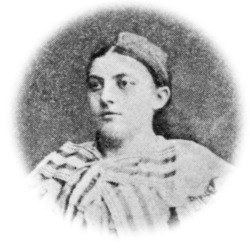Ľubica Hustá
The Izabella Group (the precise name at the time of its foundation was The Women’s Group for Supporting the Domestic Embroidery Industry in Pressburg and its Surroundings) was established in Bratislava in December 1895 by Archduchess Izabella Habsburská. It supported all embroidery techniques, a high quality of implementation, and the discovery and preservation of old patterns. It specifically addressed the preservation of the national character of embroidery. The group’s workshops made sacral costumes and textiles, everyday clothes and interior textiles. At the time of its greatest growth, the group employed 1,500 women. Mária Hollósyová was the person who contributed most to the popularity of the embroidery of the Izabella Group. She was the director of the first embroidery school in Slovakia, established in 1892 and based in the municipality of Cífer. A two-piece dress inspired by the folk blouse matching a costume, later known as the Izabella, was created according to Mária Hollósyová’s design. Fashion design became an important part of the teaching at the Cífer School, and also held a significant place in the group’s production. The workshop in Cífer became very prestigious. In 1990, Mária Hollósyová won her most significant prize, the Grand Prix at the World Exhibition in Paris. Important international prizes contributed to the growing reputation of the Izabella Group.
The art of Mária Hollósyová and the embroidery of the Izabella group was the exhibition topic – The Izabella Group Embroidered with Silver and Gold… (open at the Historical Museum in Bratislava till the end of March 2001). In a rich collection of sacral textile there were, for example, twelve embroidered antependia, a collection of sacral costumes for Cífer’s church, as well as free copy of vestments for mourning services. Everyday clothes presented at the exhibition include several variations on the Izabella blouse, as well as embroidery of a virtuously decorated collar for the coronation clothes of Empress Zita (1916). From the time of the Czechoslovak Republic, the largest double-sided textiles were preserved – group flags with central figural motifs.
The group ceased to exist in 1918, and its workshop passed under the administration of the Detva Production Group. Mária Hollósyová remained faithful to Cífer. She died in 1945.
The international creative workshops of non-woven textiles will take place in Slovakia in 2001, where some of the technologies used by Mária Hollósyová will again come to life.
